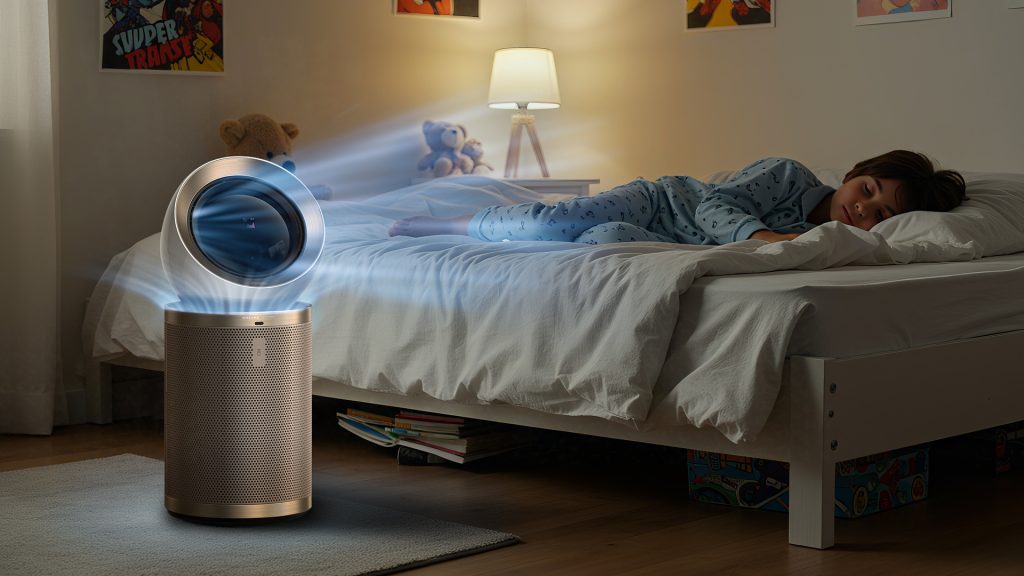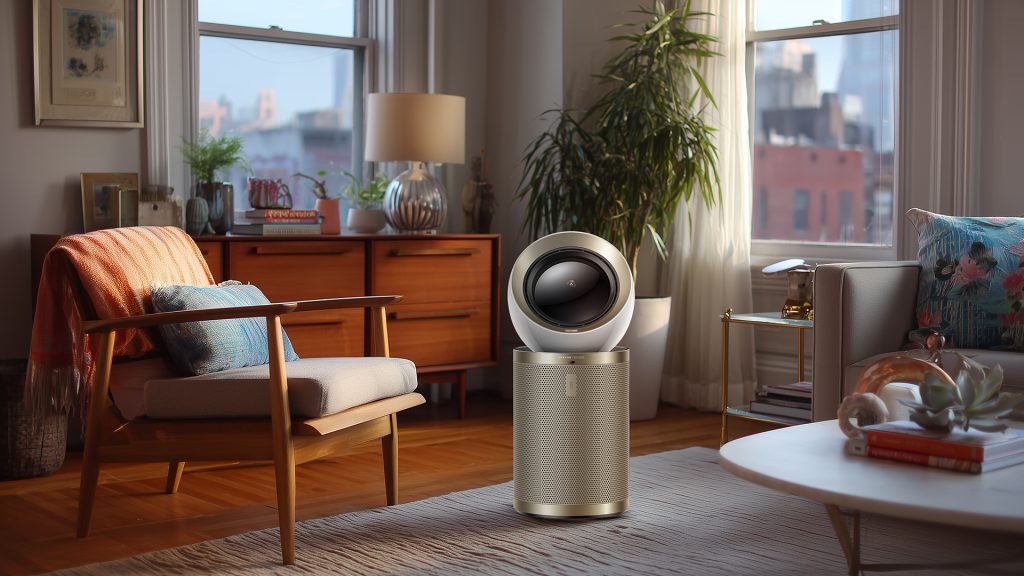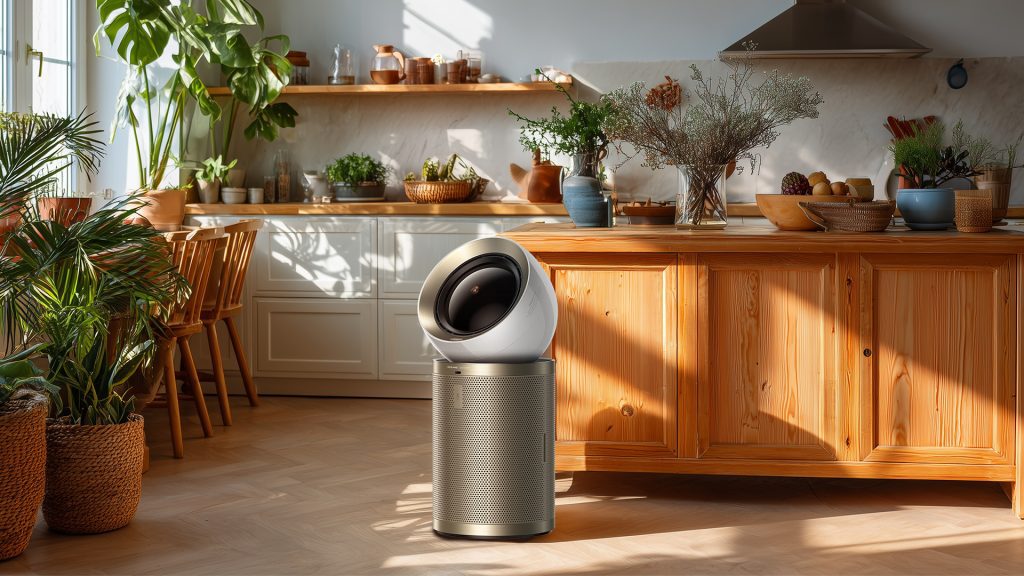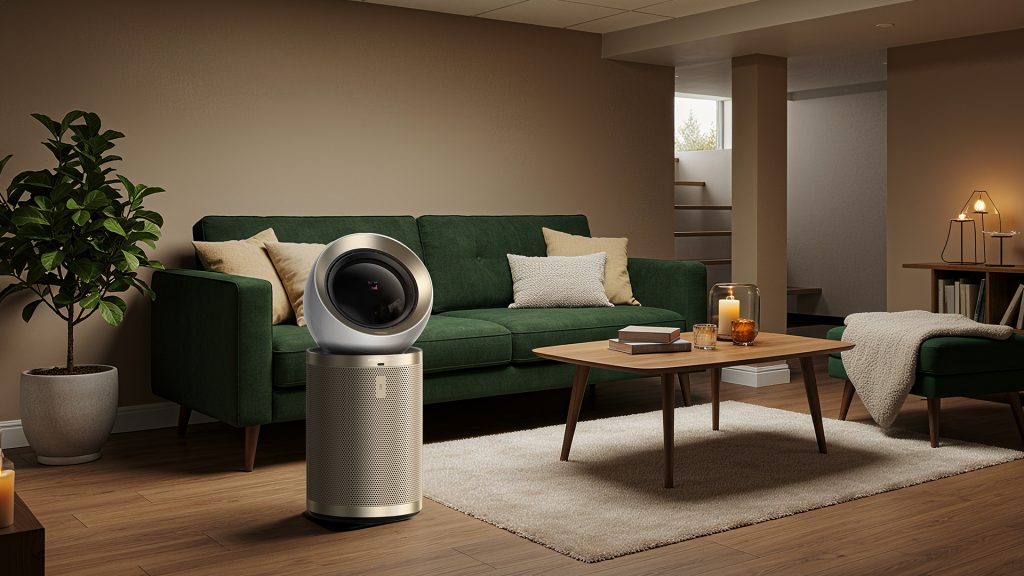
You’ve finally got your hands on air purifiers. But wondering how long it takes for an air purifier to work? No worries! You aren’t the first to pose that question. Several variables determine the effectiveness of air purifiers. Besides the environment and room size, it also depends on the specifications of the air purifiers.
This blog aims to cover the key factors affecting the speed of air purifiers. We will also discuss the duration of cleaning room by room.
Table of Contents
- How Fast Do Air Purifiers Work
- 6 Key Factors That Affect How Long It Takes
- How to Speed Up Air Purification
- Conclusion
How Fast Do Air Purifiers Work
Air purifiers take different durations to remove different contaminants from the air. The quantity and quality of pollutants can affect the time required for cleaning. For example, larger particles like pollen are removed quickly than smaller particles in greater quantities like smoke. Even if removed, the odors due to heavy smoke persist for up to a day.
The speed of cleaning up pollutants also depends on the type of filters. HEPA filters trap dust quickly, as compared to activated carbon filters that adsorb volatile gases slowly.
Here is a quick table to have a rough idea of how long various pollutants take to clean.
| Pollutant Type | Estimated Time for Purification |
| Dust and Pollen | 30 minutes to 1 hour |
| Pet dander and allergens | 1-2 hours |
| Smoke | 1-24 hours |
| VOCs and odors | 4-12 hours |
| Bacteria and mold spores | 1-48 hours |
| Viruses | 30 minutes to 2 hours |
Room-by-Room Air Purifier Timing Guide
Instant results by turning on the air purifier are not possible. Each room space has its unique characteristics and air quality challenges that can affect the cleaning speed.
Bedroom: 15–30 minutes with proper placement
Small-sized spaces, such as bedrooms, typically range from 100 to 200 sq. ft. and require less volume of indoor air to be purified. Therefore, small rooms permit rapid cycling. If you use an air purifier with a high CADR rating in small rooms, then it will only take 15 to 30 minutes to clean. You can also run the purifier continuously on a low setting to achieve a consistent air quality.
Before bedtime, turn on the sleep mode and let the air purifier operate quietly without disturbing your sleep. You can also place it near the bedside instead of directly positioning it on you. Running at high speed at first gives rapid results, especially by removing allergens like pet dander, dust mites, and pollen. This prevents breathing issues and sneezing.
Having catnaps through the night due to congestion? Push the button and run it for 15 minutes before bed every night. It will make the environment cleaner and reduce wake-ups.

Living Room: 30–60 minutes depending on size
Larger rooms would require air purifiers with higher purification capabilities. If the space is around 200-400 sq. ft, then it will require more CADR ratings to clean it within an hour. Cooking smoke or dust may take 30-60 minutes to get eliminated. In case you are running on a low setting, it may take up to 12 hours or 24 hours a day, depending on the pollutants’ traffic.
Sometimes, the duration is affected by the obstructing airflow due to the furniture and the room’s layout. Just for you to know, a central location instead of corners will provide great coverage and better airflow. You can use air quality monitors to test whether the placed purifier is cleaning the whole space.
Having guests come over for movie night? Run the purifier for 45 minutes at high speed beforehand. It will enhance comfort for asthmatic children by eliminating fragrances or hair particles. You might also need to get rid of popcorn odors from the air.

Kitchen: 1–2 hours due to cooking pollutants
The kitchen takes a longer time to remove the pollutants. It is because of the continuous presence of smoke, grease, and odors. These volatile components demand carbon filters to adsorb them, which take more time than HEPA filters. The estimated cleanup time is 1-2 hours after cooking.
The best time to use air purifiers is during or after cooking for effective removal. When you operate them during active cooking, make sure that the room is properly ventilated for better airflow. Place them on the countertop or near where you cook, but away from the heat.
Want to have dinner without food odors lingering in the rest of the house? The smell of fried foods like fish spread quickly all over the house. You need to turn on the purifier halfway through the cooking to leave the space fresh. It will prevent the spread of cooking pollutants and unpleasant odors. Moreover, air purifiers neutralize cooking odors effectively in open kitchen layouts.

Bathroom: 20–40 minutes for odors and humidity
Placing air purifiers in the bathrooms takes 20-40 minutes to control the moisture and smell. Bathrooms naturally have high humidity that promotes the development of mold growth. Therefore, you might consider purchasing a purifier with dehumidifying features to control the moisture quickly.
Keep the bathroom well-ventilated and use the air purifiers with an exhaust fan. The air purification cycle will improve air circulation. Place it in a dry space and away from sources of water to prevent damage to the filter. The activated carbon filter will also control the odor coming from air fresheners or scented sprays.
After you take the shower, the mildew shows up due to condensation or leaks. Operate the purifier together with the bathroom exhaust fan after you shower, the fan removes humidity to the outside, while the purifier targets odors and airborne particles. Let it run for 30 minutes to limit the chances of mold growth. The HEPA filter can quickly trap the dense mold spores. This helps people with respiratory problems or compromised immune systems.

Basement: Up to 48 hours for mold and VOCs
Basements consume the most time as they are poorly ventilated and extremely damp over time. You will have to run the air purifier for 24-48 hours for thorough cleaning. The HEPA and activated carbon filters will remove mold, foul odor, and VOCs.
One thing to keep in mind is that air purifiers alone are not enough to control the humidity. They can only help in improving the air quality. You would need to pair it with a dehumidifier to eliminate the growing mold on or beneath the surfaces. Watch for sources of mold for remote monitoring.
Frustrated with the foul-smelling, moldy mess in your basements? It’s a common tradition to store the unused, old furniture in the lower story. But you can transform the space by running air purifiers for 48 hours straight. It will destroy the harmful particles and help you convert the damp room into a functional home gym effortlessly.

Overwhelmed much? Here is a quick recap.
| Room Type | Estimated Time for Air Purification |
| Small bedroom | 15-30 minutes |
| Living room | 30-60 minutes |
| Kitchen | 1-2 hours |
| Bathroom | 20-40 minutes |
| Basement | Up to 48 hours |
6 Key Factors That Affect How Long It Takes
Besides the room size and pollutants, there are some other factors that can affect the working speed of air purifiers.
- Initial Room Environment: If the air quality is poor or you live in a highly polluted area, it will take longer to purify the room in the beginning.
- Pollutant Sources: The points of entry or sources also affect the speed. For example, continuous smoke emissions can delay effectiveness.
- Fan Speed: Running the air purifier on high settings will speed up the purification as it increases the airflow.
- Filter Conditions: Air purifiers use different filters to trap or adsorb the pollutant particles. If they remain clogged and are not cleaned regularly, this can slow down the performance of purifiers.
- Placement: Keeping the air purifiers in the central location (away from corners) can optimize the circulation. You can read our guide about where to place an air purifier for better effectiveness to get more tips.
- Seals and Windows: If the doors or windows are not closed, it can introduce a new tide of contaminants. This will add a burden to the working purifiers.
How to Speed Up Air Purification
Optimize the air purification by running the unit on high speed initially. It will quickly remove the larger particles. Make sure the rooms are enclosed to prevent the entry of new pollutants. Don’t smoke indoors and control the sources of any pollutants. Lastly, place the purifiers in the right place to capture the pollutants effectively. For more guidance on keeping your purifier efficient, check out our guide on how long to run an air purifier for best practices and extra tips.
For larger spaces, speed up the process by using multiple fans to improve the air circulation. Generally, a smart model with auto-adjusting features, such as those from Dreame, can help improve the indoor air quality in as little as 30-50 minutes. The Dreame AirPursue PM20’s AI detection intelligently targets the airflow and shows real-time progress.
Conclusion
How fast air purifiers work depends on many factors. Larger spaces and high-traffic areas will take more hours to clean. At the same time, small spaces may take as little as 30 minutes to remove allergens and odor. It depends on the quality of pollutants, room conditions, and the model used. Don’t just wonder how long it takes—try it in your own space tonight. Run your purifier before bed or after cooking, then notice the difference in how you breathe, sleep, and feel. Clean air isn’t just a comfort, it’s a daily habit worth making. Start now, and give yourself the healthier environment you deserve.
Using Dreame air purifiers can quickly purify the entire room with smart, targeted airflow. Whatever air purifier you choose, it will improve the air quality and help you sleep better. You deserve to breathe in clean, fresh air.